Last updated on 2025-08-15
A review and photo examples of the Leica Hektor 12.5cm F2.5 with the LEICA M9 +LEICA S Typ007.
- Please see the disclaimer regarding advertising here.
- Italicized links in the text are advertisement links that take you to other sites.
Table of contents
Gallery
The sample photos were taken with the LEICA S typ007 and LEICA M9 + VISOFLEX-3
Review
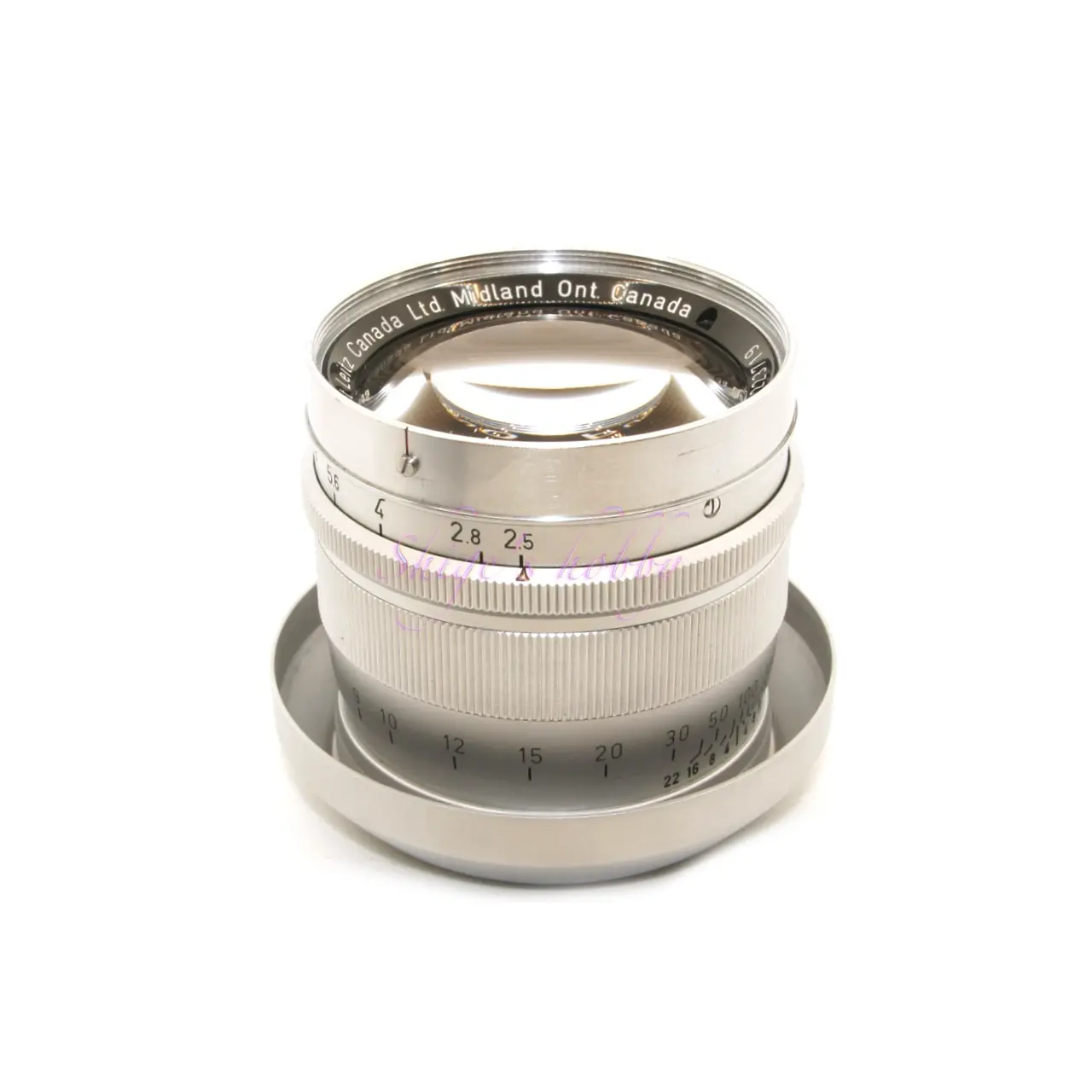
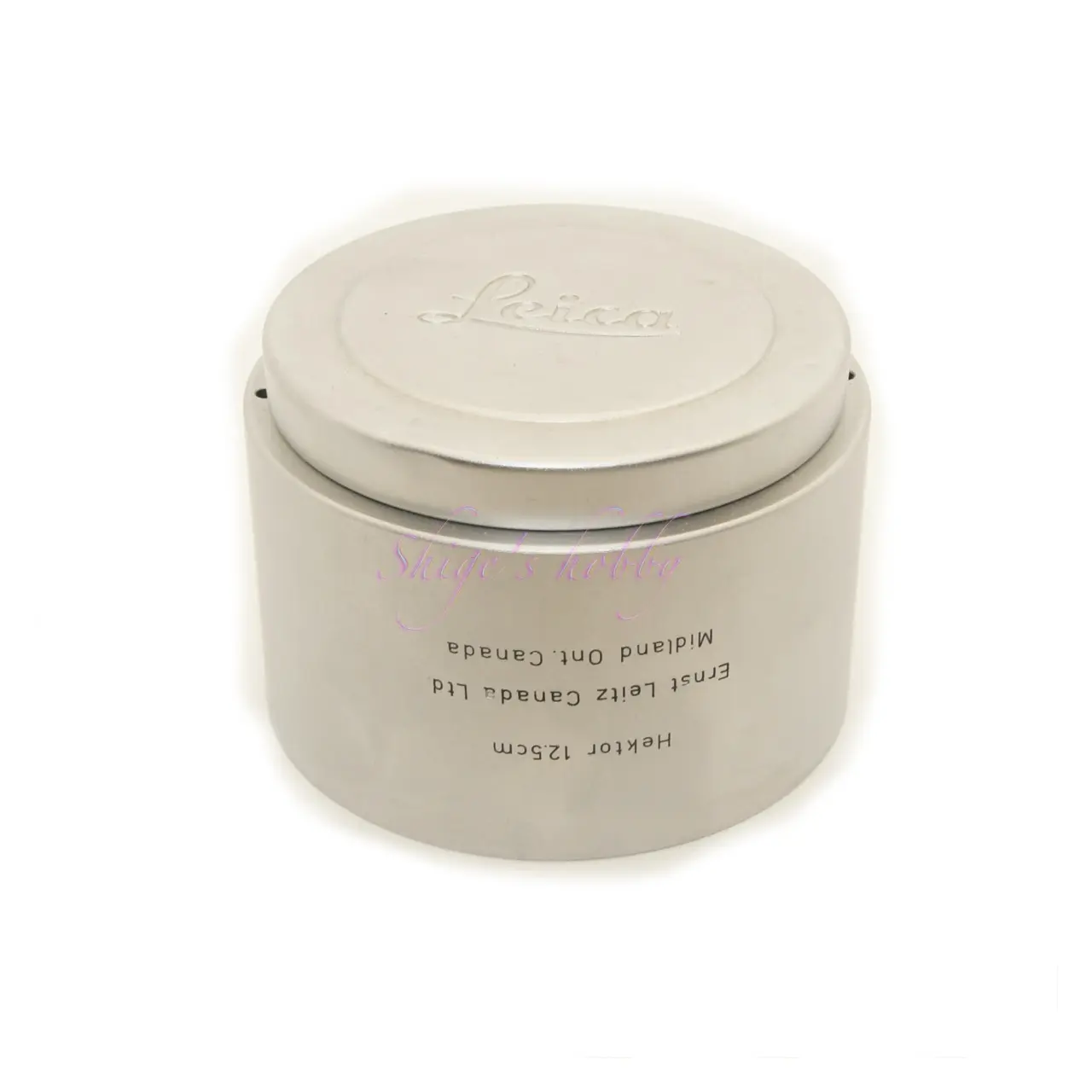
1.Overview
The HEKTOR 12.5cm F2.5 is a Visoflex L39 mount lens released by Leitz in 1949.
The lens is made up of 4 elements in 3 groups, 20 aperture blades, and the aperture ring has a click every 1 stop, which makes it feel good to stop. The entire lens has the luxurious lens construction of the old days.
The exterior is beautiful silver, and I have not seen many hard-used ones on the second-hand market, and in the early 2020s, it was possible to find one in good condition at a low price with a little searching.
There are few complete items such as hoods and caps, and the fewer accessories, the cheaper they are sold. If you search for the accessories individually, it can be quite expensive, so if you are aiming for a perfect condition, it is easier to buy one that is complete from the beginning, and if you are only going to use the lens, it is better to choose one with good glass and aperture condition.
The minimalist cylindrical appearance that is created by attaching the cover on the mount side, reversing the hood, and attaching the front cap makes it a picture-perfect lens when displayed. However, this has the disadvantage that the average consumer would not recognize it as a lens.
- Hood: HKMOO (12532)
- Rear cap: HGOOI
- Front cap: ORPBO (large)
The Visoflex L39 mount has a very long flange back of 91.1mm, so it can be attached to many lenses, including medium-format cameras, via a mount adapter.
The main flange backs are as follows:
| Mount name | Flange back length(mm) |
| Nikon Z | 16 |
| Sony E | 18 |
| LEICA L(L-Mount Alliance) | 20 |
| LEICA M | 27.8 |
| SIGMA SA | 44 |
| CANON EF | 44 |
| M42 | 45.5(median value) |
| NIKON F | 46.5 |
| LEICA R | 47.4 |
| LEICA S | 53 |
| CONTAX 645 | 64 |
| VISO FLEX M | 69(About value) |
| VISO FLEX L39 | 91(About value) |
The lens is made up of 4 elements in 3 groups, and I looked into whether the rear group is glued together like the Elmar (Tessar type) or whether the center element is glued together like the Hector 13.5cm or Thambar 9cm, and found a page on an Italian website introducing the Hector 12.5cm, which suggests the latter.
According to the above site, the actual focal length of the Hektor 12.5cm is within the tolerance of plus or minus 5% permitted for display in some standards (as of 2024, there are no standards that officially specify the focal length error, and it may be confused with other standard information). It is 119.5 mm. While I was looking for the lens configuration of the Hektor 12.5cm on the Internet, I saw a few descriptions that a small number of Hektor 12cm was distributed before the 12.5cm version was sold, but in the end I came to think that it is the same lens as the original Leitz projection lens, the Hektor 120mm f/2.5.
In addition, the focal length variations of Hektor are 300mm, 120mm, and 85mm, and all of them seem to have a middle lens glued together. I looked at several sites for information, but some of them did not state the source of the information, so I also looked for a site that disassembles lenses to better understand the true lens construction, but I was unable to find any.
2.Usability
I used it with the LEICA S Typ007, the LEICA M9, and other SLR and mirrorless cameras, and apart from the lens being a little heavy, it worked fine with all the cameras I used.
The Leica M9 is a digital camera, but since it does not have a live view, I used a mechanism called Visoflex (hereinafter VISOFLEX) that changes a rangefinder camera into a SLR. The VISOFLEX-1 can be fitted with a VISO-L39 lens as is, but the VISOFLEX-2 and VISOFLEX-3 are fitted to the lens body via an L39-M conversion adapter called OUBIO / 16446 / 16466M. The photo below shows the Hektor 12.5cm + OUBIO + VISOFLEX-3. This is fitted to the Leica M9. The VISOFLEX mentioned here is different from the VISOFLEX used with the Leica M10 and later digital cameras. Although we are now in the age of mirrorless cameras and the VISOFLEX, which adds a mirror box to a rangefinder camera, is no longer necessary, it is still a misleading name.
I plan to create a separate page to provide a detailed explanation of the VISOFLEX, which adds a mirror box to the rangefinder camera shown in the photo below.
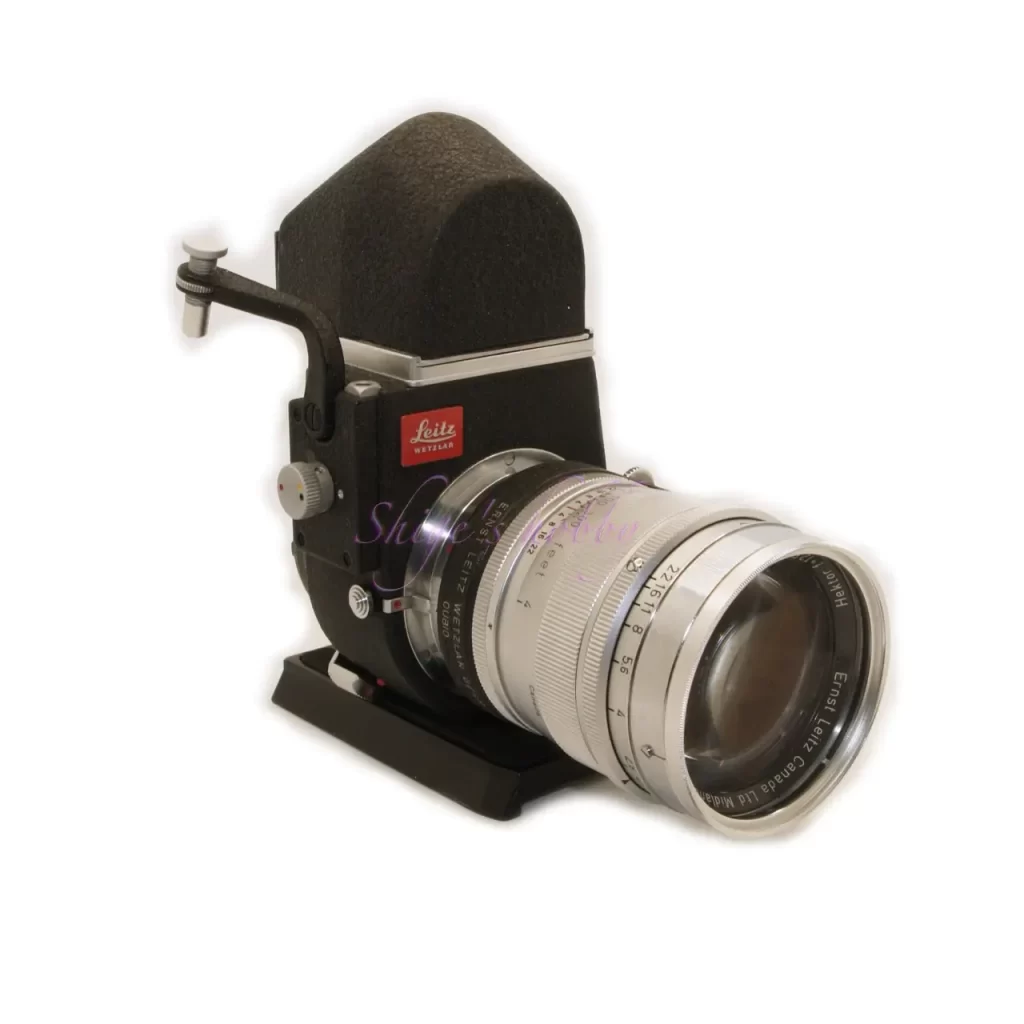
The minimum shooting distance of 1.2m for a 125mm lens means you can’t get very close to the subject, so if you’re shooting a single flower, you’ll need to use the white space to create a good composition. If the subject is a large portrait or a dog, you can take a picture of the entire frame to bring out the bokeh. To shorten the minimum shooting distance, you can use an extension tube.
This minimum shooting distance of 1.2m is a design restriction imposed by the 10x rule for the focal length of old lenses. In old lens design methods, this was a design restriction because lens performance deteriorated when the lens was extended beyond 10 times the focal length. For this reason, lenses that could be extended beyond 10 times the focal length were called macro (micro) lenses and were classified differently from normal lenses. In modern times, due to changes in lens design methods, there are more lenses to which the 10x rule does not apply.
There are many aperture blades, and because the lens diameter is large, the amount of movement of the blades is also large. Therefore, care must be taken when opening and closing the aperture roughly, as the blades can get caught and broken.
While checking lenses at a second-hand store, I turned the aperture blades from infinity to the minimum in one go without paying attention to the stops, and the camera shop owner warned me. I wondered if they were that fragile at the time, but after using second-hand lenses for a long time, I think his opinion is valid. Old lenses should not be treated roughly. The lens I own is the lens I purchased at that time.
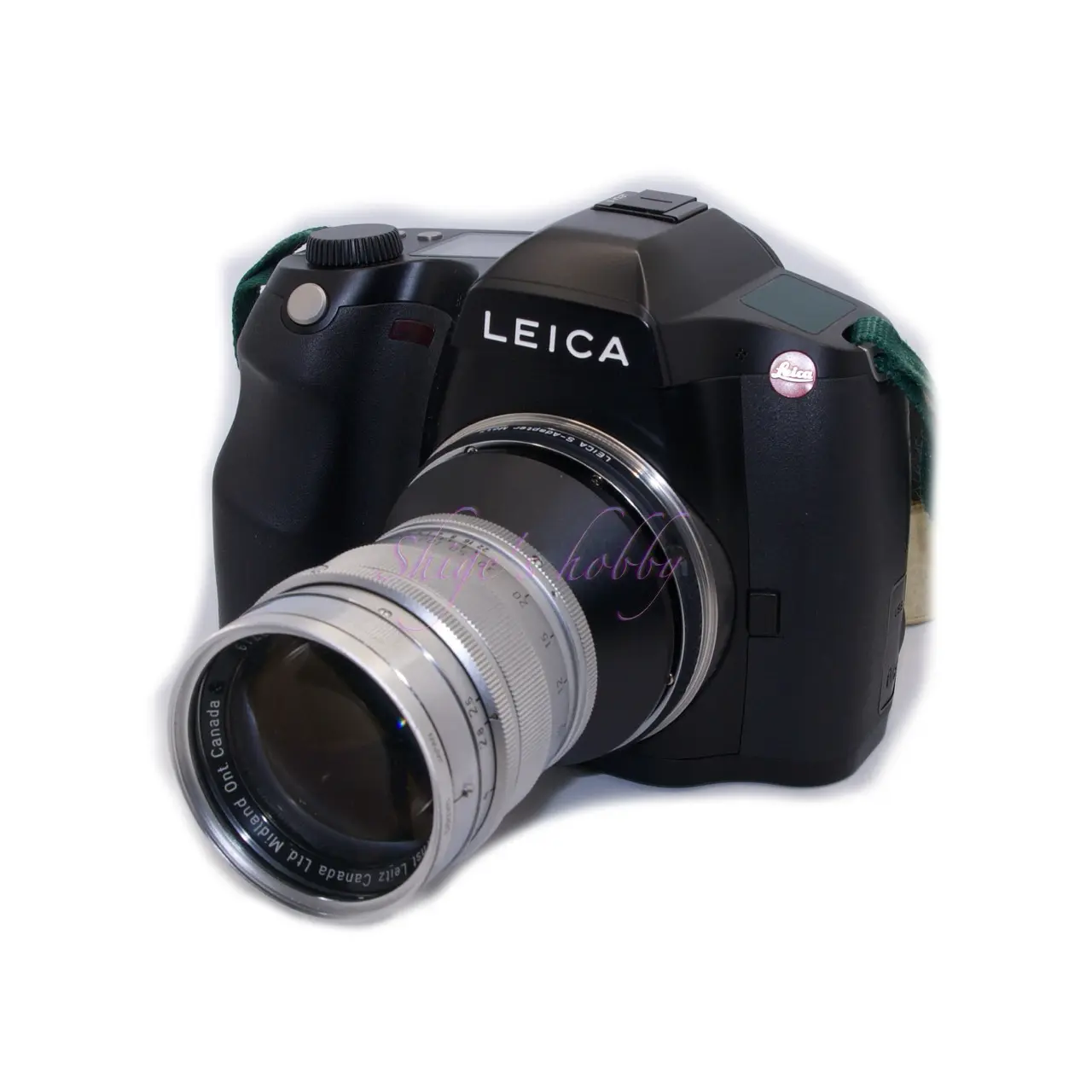
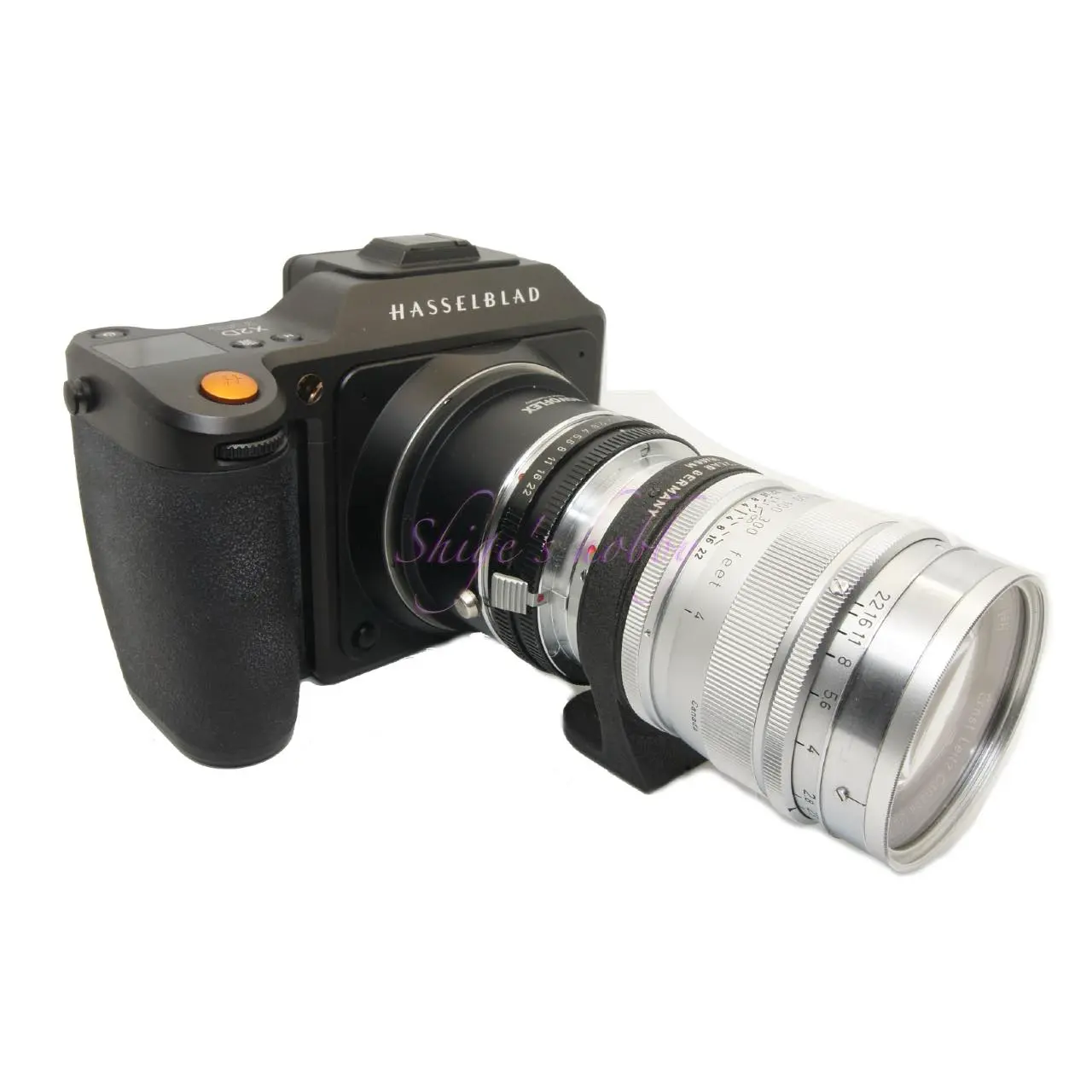
Middle size sensor digital camera
The image circle of this lens is wide, and there is no vignetting on the 44mm x 33mm sensor used in the Hasselblad X series (X1D, X2D, X907, etc.) or the 45mm x 30mm sensor of the Leica S typ007, but there is slight image degradation at the edges of the image.
For these medium format digital sensors, multiplying by a factor of 0.8 in 35mm format results in a lens with a focal length equivalent to 100mm.
For the Hasselblad X series, the lens can be converted to an R mount using the genuine Leica OUBIO + Viso Lens / R Body Adapter (14167), so if you add an X-R mount adapter, you can use the VISO-L39 lens. However, since there is no shutter mechanism on the lens side, you will need to use the electronic shutter of the X series to shoot.
For mounting the VISO-L39 on a LEICA S, Fotodiox Pro sells an S-VISO-L39 adapter. I don’t think this adapter was available when I looked for it previously, but I have confirmed that it will be released in August 2024. The diameter of the connection part of this adapter appears to be smaller than that of the guarded VISO-L39 lens, so I think it is possible to connect the Hektor 12.5cm, but since I have not actually tried connecting it, you will need to check whether it can be attached when purchasing.
I use two adapters, the S-MAMIYA645 adapter and the MAMIYA645-VISO-L39 adapter, to attach the VISO-L39 lens to the Leica S. When I tried the Hasselblad-V-VISO-L39 adapter previously, the diameter of the lens connection part was large and I was unable to attach the guarded VISO-L39 lens.
As mentioned above, since this lens has a long flange back, if you find an adapter that can be attached to the camera, it can also be used with the Fujifilm GFX series, PENTAX 645, and other cameras with the same sensor size.
3.Summary
In conclusion, to sum up the HEKTOR 12.5cm F2.5 is a lens that can be used with medium format digital sensors and has a large image difference. Although it has a clear depiction due to the small number of lens elements, the minimum shooting distance is 1.2m in the standard state, so it is a lens that cannot get close, so if you want to take close-up shots, you can shorten the minimum shooting distance by using an extension tube.
Specification ,Study and more
About Focal length of 125mm
There are only a few lenses with focal lengths of 12.5cm and 125mm. Like 135mm, these focal lengths have been absorbed into zoom lenses.
In the midst of all this, I searched for a 125mm prime lens and found the EBC FUJINON GX M 125mm 1:5.6 for Fujifilm’s 6×8 camera, the Canon EX 125mm F3.5 for the Canon EX-EE, and other lenses such as cine lenses and large format lenses. The two lenses I mentioned above are not compatible with cameras used by general photographers, so there are few examples.
I think the Hector 12.5cm and Macro APO-LANTHAR 125mm are the lenses that general photographers are familiar with. The APO-LANTHAR 125mm and Hector 12.5cm have similar specifications except for the minimum shooting distance, but the APO-LANTHAR 125mm, as the name suggests, is a lens that excels in close-up shooting, and the depiction and shooting scenes that the two lenses are suitable for are different.
| Lens name | HEKTOR | Macro APO LANTHAR |
| Focal length | 12.5cm | 125mm |
| Max aperture | 2.5 | 2.5 |
| Min aperture | 22 | 22 |
| Lens Construction | 4 elements in 3 groups | 10 elements in 9 groups |
| Leaf blade | 20枚 | 9枚 |
| Min distance(m) | 1.2 | 0.18 |
| Lens length(mm) | 77(VISO-M) | 88.2(Nikon Ai-S) |
| Lens Max diameter(mm) | φ63 | ⌀76 |
| Filter Size(mm) | 58 | 58 |
| Weight(g) | 728(VISO-M) | 690 |
| Release date | 1949〜1960 | 2001.06〜2007.03 |
| Street Price | – | ¥95,000- |
Reference links
- Leica Wiki HEKTOR 12.5cm
- List of camera flange distances
- 12,5cm f/2,5 HEKTOR PP.Ghisetti
- LEITZ HEKTOR 85MM F/2.5
- Fotohandel Delfshaven
- Display Errors
Update history
- 2025.7.8
- 2024.10.2
Affiliate link
- Please see the disclaimer regarding advertising here.
- Italicized links in the text are advertisement links that take you to other sites.
- Leica Lens・Ads by Amazon
- Leica Books・Ads by Amazon

Amazon Prime Sale

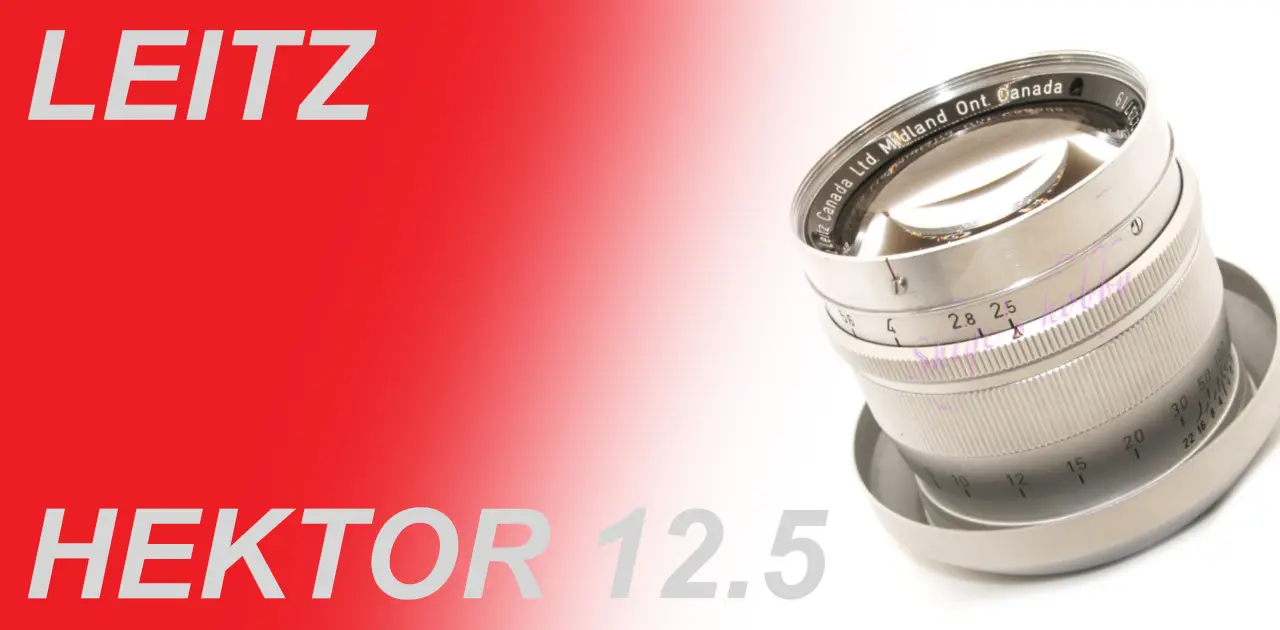

Be First to Comment